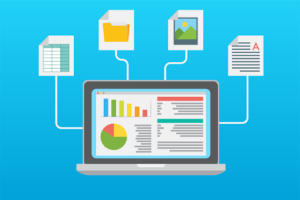Software testing is a crucial step before delivering a fully functional, high quality application to customers or end-users. The testing process ensures that an application is error-free, efficient and easy to use. In order to deliver such a high quality product it is important to perform both functional and non-functional testing.
Functional testing Services involves black box testing where the main focus is on the validation of functionalities from an end user’s perspective. It verifies all the features and functionalities of an application and evaluates whether it meets the specified business requirements or not.
Functional testing can be done manually as well as via automation.
Functional Testing process
The functional testing process includes:
- Identifying the functionalities of software which need to be tested.
- Creating sample input for the specified test cases.
- Determining the output based on software expectations.
- Execution of sample input.
- Comparing the expected output and actual output.

By comparing the expected output with the actual output we can check whether the software is fulfilling the customer’s requirements.
Types of functional testing
| Types of Functional Testing | Description |
| Unit testing | Unit testing is the first step in the software testing life cycle. In this, developers test individual units/components of the software application to validate intended requirements. |
| Integration Testing | Integration testing examines the defects and errors after the individual units are integrated together. It is done to check whether all integrated units are working in sync with each other. |
| System Testing | System testing is performed on an integrated software application to test whether it meets all the intended functional and business requirements. |
| Smoke Testing | Smoke Testing is done to test the stability of a build after each release. It ensures that major critical functions of the build under test are working as per the expectations. |
| Interface Testing | Validating the data transmission between two integrated units is termed as interface testing and it is a significant part of integration testing. |
| Regression testing | Regression testing is performed to check the impact of changes made to an already functioning and tested code. It may involve complete or partial execution of functional test cases depending on the quantum of code change. |
| User Acceptance testing | User acceptance testing is important for verifying whether the software meets the customers’ expectations. This is the last step before delivering the product to clients and customers. This testing helps in analyzing how the application will work in the real world. |
To know more in detail about functional testing, refer to our already published article by clicking here.
Best Practices
- Planning of test cases
Identifying effective test cases within a software application is a key step of functional testing. Proper knowledge of what needs to be tested, defining a procedure and test planning form the foundation of a good testing process.Before framing the test cases one must know about the business expectations from the software application. This lets you know the functionalities that need testing which in turn helps in planning relevant test cases and generating required inputs for them.

- Execution of test cases
Test execution is yet another crucial process for validating workflows in the software application. Planning test cases for the execution helps testers and developers to work systematically. This lets them check within the gamut of pre-planned workflow and verify the expected functionality. The selection of test cases is based on the user’s requirements to meet their expectations from the product. This step ensures error-free functioning of the integrated modules and components.
- Maintain a Requirement Traceability Matrix
Requirement Traceability Matrix (RTM) maps all the requirements to test cases. It becomes easier to keep track of test cases and the possibility of missing any functionality is eliminated. Hence, it ensures that the whole application is built in accordance with the client’s requirements. Clearly, maintaining a requirement traceability matrix helps developers and testers in tracking every possible test case which needs to be tested.

- Identifying test cases for Automation
Test Automation is a fast and effective procedure which uses automation tools to validate test cases. Automation saves significant time and effort by executing test cases which need repetitive testing and don’t require much manual intervention.
Automation testing uses automation tools to execute test cases much faster than manual testing. Automation tools require test scripts for the execution of test cases that need to be added, reviewed and maintained for each release cycle. Selecting some cases for automation makes the software testing fast and more efficient.

- Skilled automation team
Automation uses effective tools to validate test cases which are time consuming and repetitive. Such test cases must be planned intelligently. It is necessary to know which test cases need the manual testing and which can be automated. This requires time, effort and a good skill set of application and programming knowledge.
Automation requires tools and not everyone knows how to work with such tools. Writing an accurate automation script requires good knowledge of the workflow related to the application and technical know how. Initial planning of test cases that need automation using the right automation tools results in significant time-saving later.

- Reporting test results
A test case report consists of a summary of the execution of test results. The report should be in simple and understandable language which helps in navigating the development team towards resolving the errors. Maintaining clarity in the report is the crucial step when building it. This helps developers to know the cause of failure and the expectations of the testing team according to business requirements.
An effective test report facilitates the communication between the testers and the developing team. The test report also records information regarding any new defects that were encountered during testing. It consists of all progress and observations related to each test case and must incorporate unambiguously all the details to make the testing more time-efficient.
- Analysis
The analysis involves a detailed examination of the test report. Analyzing test reports helps in further planning and prioritizing the features and bugs involved in the functional testing. We can detect problems and options to resolve them while analyzing the details and information mentioned in the test report.

Functional Testing Services
New products and processes are being introduced continuously with advancements in the field of technology. In-depth testing is required in order to deliver a high-quality, efficient and functional product. Together, functional and non-functional testing help in achieving that goal. We at Webomates facilitate the whole testing process with human-assisted machine learning to create and analyze test cases.
Webomates CQ helps in delivering quick test results by using multiple channels like Automation, Crowdsource, Manual, AI Automation. It provides the right automation tools and team to execute software testing effortlessly.
Reach out to us for information on our functional testing services that also include Exploratory Testing. We guarantee full regression of every test case in under 24 hours and provide triaged video defects. Our customers spend only 1 hour a week on a Full Regression of their software!
If you are interested in learning more about the testing services offered by Webomates then please click here and schedule a demo, or reach out to us at info@webomates.com


No comments:
Post a Comment